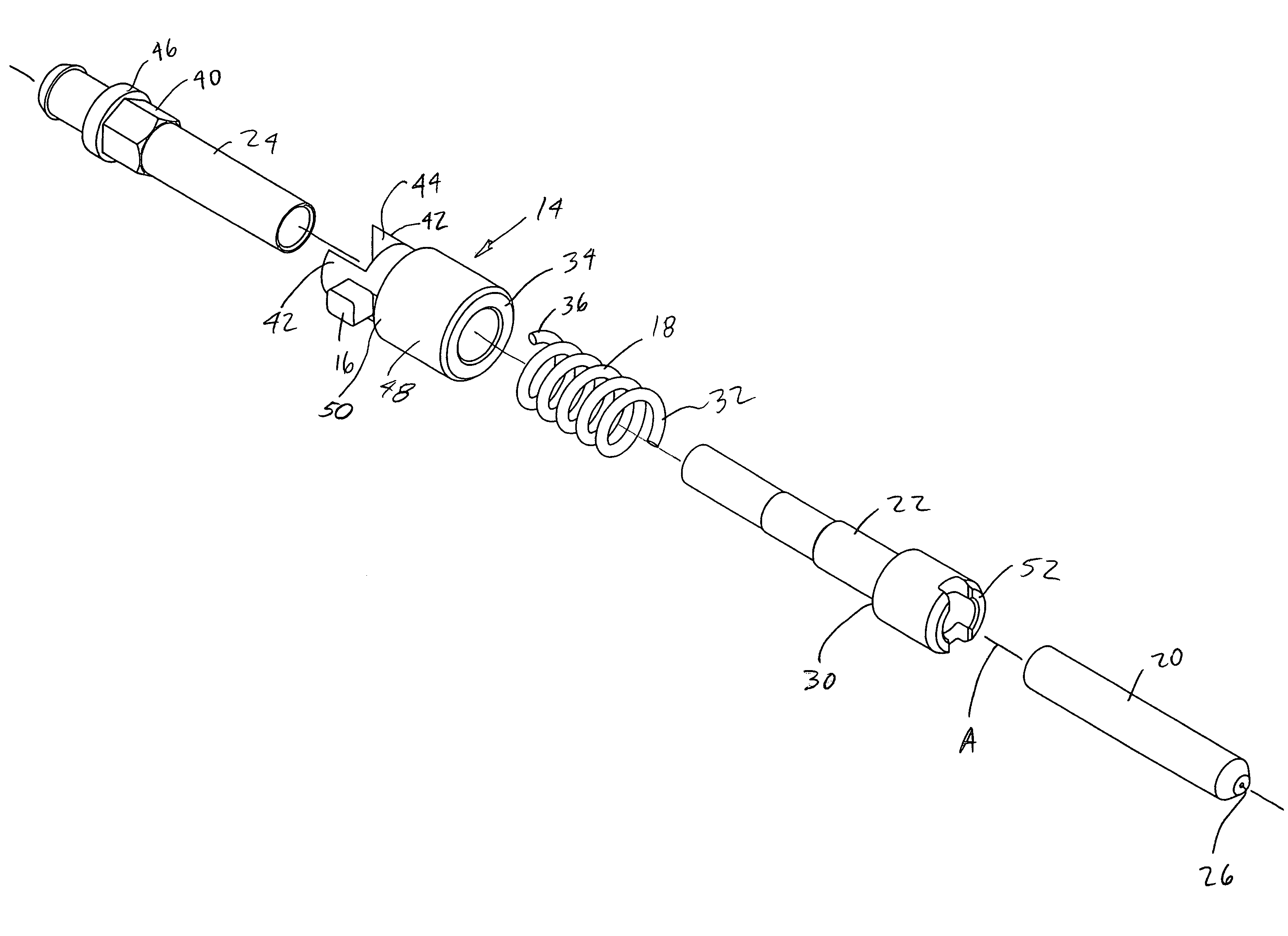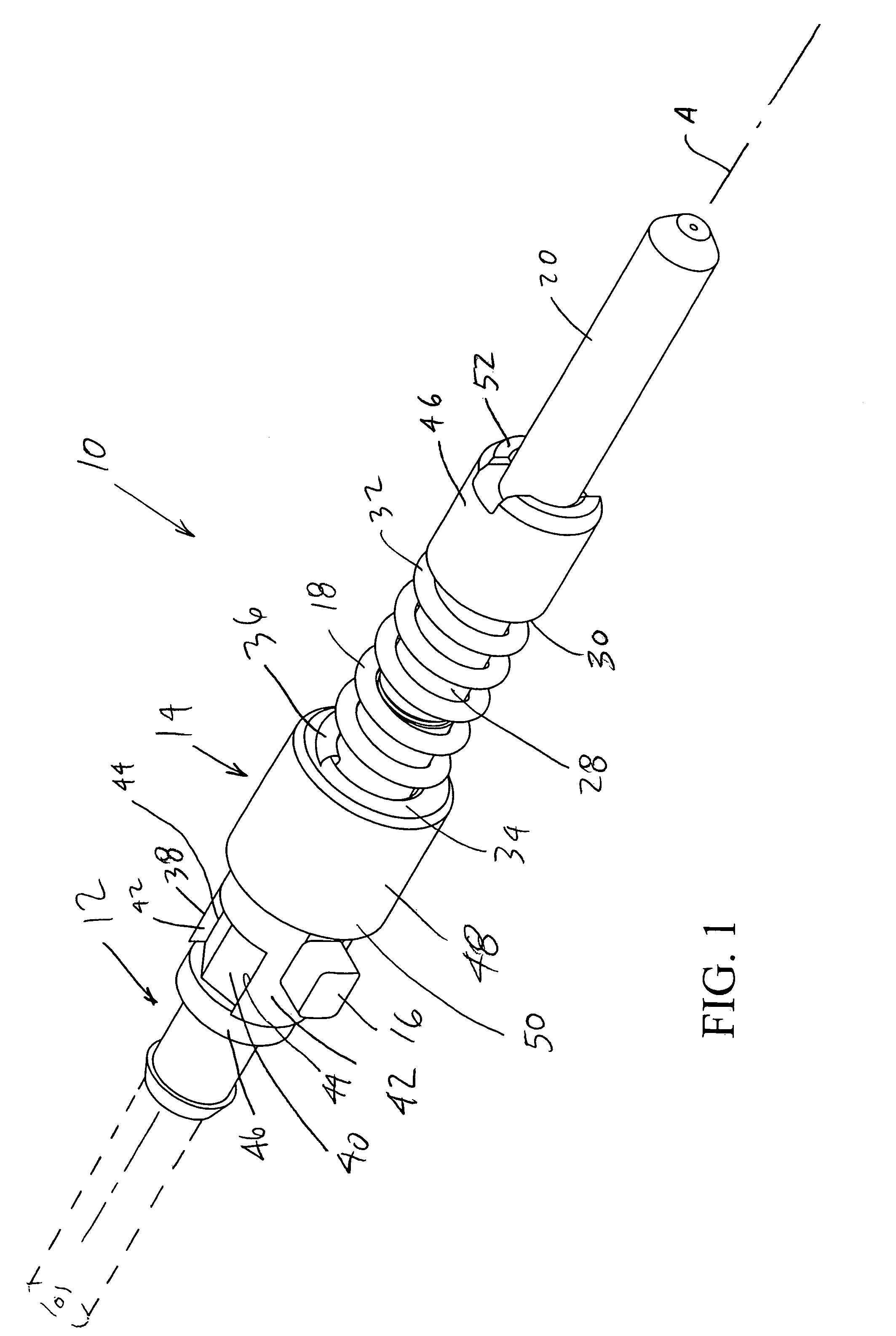Optical fiber terminus assembly
a technology of optical fiber and terminus, which is applied in the direction of optics, instruments, optical light guides, etc., can solve the problems of inability to make a perfect connection, ineffective loss of tuning, and particularly difficult tasks, and achieve the effect of removing complexity and quickly servicing connectors
- Summary
- Abstract
- Description
- Claims
- Application Information
AI Technical Summary
Benefits of technology
Problems solved by technology
Method used
Image
Examples
Embodiment Construction
[0021]In accordance with one embodiment of the present invention and referring first to FIG. 1, an optical fiber support assembly or terminus 10 and an optical fiber connector that includes such terminus, as well as a method of assembly, are disclosed. The terminus includes three main components, inner main body or member 12, a sliding collar or outer member 14 with protrusion boss or tab 16 extending radially therefrom and substantially helical spring or biasing member 18. The inner main body is typically an assembly of three components (FIG. 2) a ferrule 20 (typically made of ceramic or metal), a forward section or body 22 that is joined to the ferrule with an adhesive or by a press-fit and a rear section or body 24 that is assembled with forward section 22 and captures the sliding collar and helical spring 18 therebetween. As described in more detail below, sliding collar 16 is indexable through the interaction between registration structure integral to the collar and indexing st...
PUM
 Login to View More
Login to View More Abstract
Description
Claims
Application Information
 Login to View More
Login to View More - R&D
- Intellectual Property
- Life Sciences
- Materials
- Tech Scout
- Unparalleled Data Quality
- Higher Quality Content
- 60% Fewer Hallucinations
Browse by: Latest US Patents, China's latest patents, Technical Efficacy Thesaurus, Application Domain, Technology Topic, Popular Technical Reports.
© 2025 PatSnap. All rights reserved.Legal|Privacy policy|Modern Slavery Act Transparency Statement|Sitemap|About US| Contact US: help@patsnap.com



